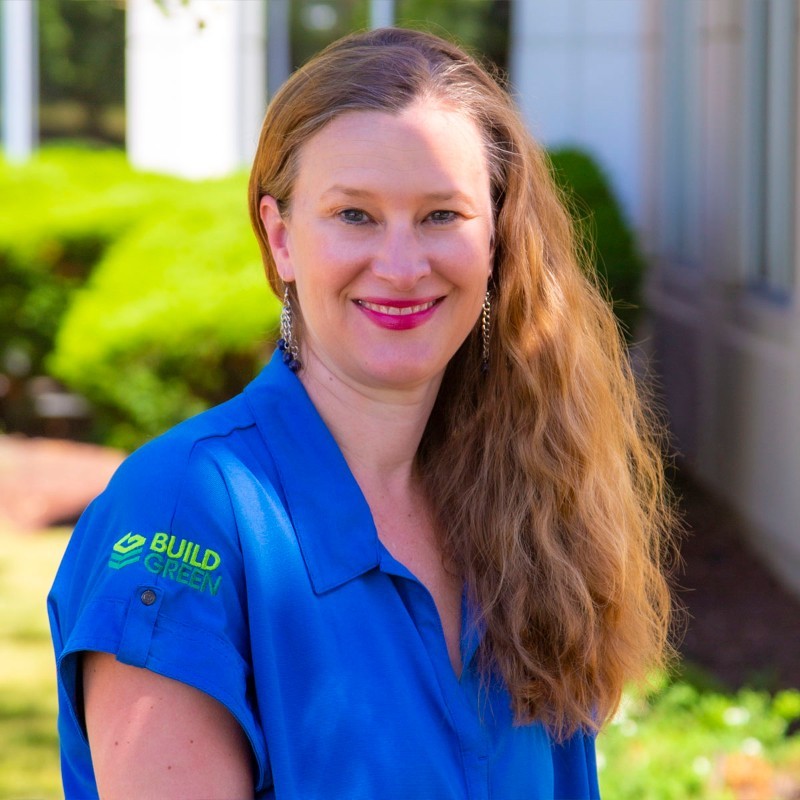Rheaply is continuing our guest blog series! We’re inviting contributors from the world of sustainability and circularity to share their thoughts, opinions, and hopes for the future of the industry.
This article comes from our friend Patty Lloyd, Director of Sustainability at Leopardo Companies, Inc. You can listen to Patty on the Rheaply Multi-usiverse podcast here.
We are at a major inflection point.
There were more recorded natural disasters than ever this year; we had the hottest summer–and sadly it’s a record to be broken more than once; there are multiple wars raging in the world. Social justice, poverty and hate seem to be at a high point. We have yet to close the circularity gap – down 17% from just 5 years ago. We are now 7.2% circular – meaning >93% of the materials extracted on earth are discarded after first use.
And yet, how do we, as sustainability professionals, keep marching forward with optimism?
The answers and forthcoming actions are both big and small. They take bravery, persistence, unflinching dedication in the face of opposition, and unstoppable forward progress. It’s important to be persistent, even if at some points it doesn’t feel as though we are making advancements. We must be stubbornly optimistic and completely realistic all at the same time. We cannot let these many distractions take our eyes from the prize, and it is on us to keep advancing equitable environmental solutions that benefit the greater good.
Reuse is the gift that keeps giving
One bright spot in all this discord is that it is an amazing time to be involved in sustainability and climate action. Recent federal, state, and city actions are providing a sudden momentum for climate planning, climate goals, embodied carbon action, EV readiness, and more. This provides an opportunity for unconventional thinking on how to capture the energy of this moment for the maximum benefit.
The growing focus on reuse as a climate action strategy has taken practitioners by surprise. How could there be a practical, affordable, environmentally friendly, and socially beneficial strategy that we haven’t implemented yet? One that seems almost obvious. A strategy that was once so commonplace that people who didn’t engage in it were considered wasteful and frivolous. While some critics say it’s too plain, that maybe we need a new-fangled strategy–I don’t think so.
When talking about a circular economy, material reuse is a wheel with many spokes and each of those spokes represents a social or environmental benefit.
- Reduced air emissions due to reduced processing and landfill waste
- Land use benefits from a reduction in storage
- Preservation of dwindling stores of virgin materials
- More green jobs, lower embodied carbon, localized supply chains, affordable building materials, and more- the list goes on and on.
Right to repair
Reuse is quickly becoming a strategy that can’t be ignored and the governing bodies are beginning to take action. Recent right to repair legislation is a huge step towards retaining value in materials that are currently in use.
This type of policy prevents harmful monopolies on parts availability, repair qualifications, and shifts the dialogue on rampant and unnecessary consumption. Some of the excessive consumption once blamed on the consumer has never been in the hands of the consumer at all. They were forced, at the hands of the manufacturers, to replace things rather than repair, because repair was made unattainable. Repair has a direct correlation with allowing materials to be reused to reach the end of their useful life, it has a direct relationship to a circular economy and reducing global carbon emissions.
How the EPA is helping catalyze reuse
Recently, the EPA released a notice of funding opportunities for initiatives that reduce embodied greenhouse gas emissions for construction materials and products. The goal of this is to:
- Increase the robustness of greenhouse gas emissions data associated with the production, use, and disposal of construction materials and products.
- Assist businesses in disclosing and verifying these data via robust EPDs, as well as states, Indian tribes and non-profit organizations that assist these businesses.
- Spur market demand for construction materials and products that have lower embodied greenhouse gas emissions.
The reuse community provided strong initial feedback to the EPA on this topic, allowing the agency to specifically address reuse throughout the proposal request. Reuse practitioners can mobilize this funding vehicle to create standards and data to reward the lowest embodied carbon materials there are out there–those that are already made.
This action aims to incentivize manufacturers, designers, owners, and builders to create products and buildings that can be broken down into their primary parts, and then makes the directive to break them down and salvage those parts. The policy enacted today will create the materials we need tomorrow so that we aren’t faced with running out of resources, but instead have a continuously cycling pool of them.
Shifting the paradigm in waste management means no waste
Focusing our action on things that we can achieve locally, in our businesses and communities will have overarching positive impacts. Implementing the beneficial practice of reuse across all disciplines and industries requires a major paradigm change. We must think about disassembly when we design, we must think about second lives, end-uses, and overarching material supply chains.
Additionally, it is my belief that the concept of single use needs to go away. The cost to throw things away needs to be much more expensive. Industries need to shift to planning how they are going to implement practical, achievable strategies to lengthen the lifespan of materials in use and avoid using disposable materials we don’t need. Consumer values are shifting to durability, and quality. The most affordable options should never be replaced. Repair and reuse will need to move up the waste hierarchy to sit at the top of the pyramid above recycling, and waste-for-energy.
Let’s give disposal such a bad name that it becomes a swear.
